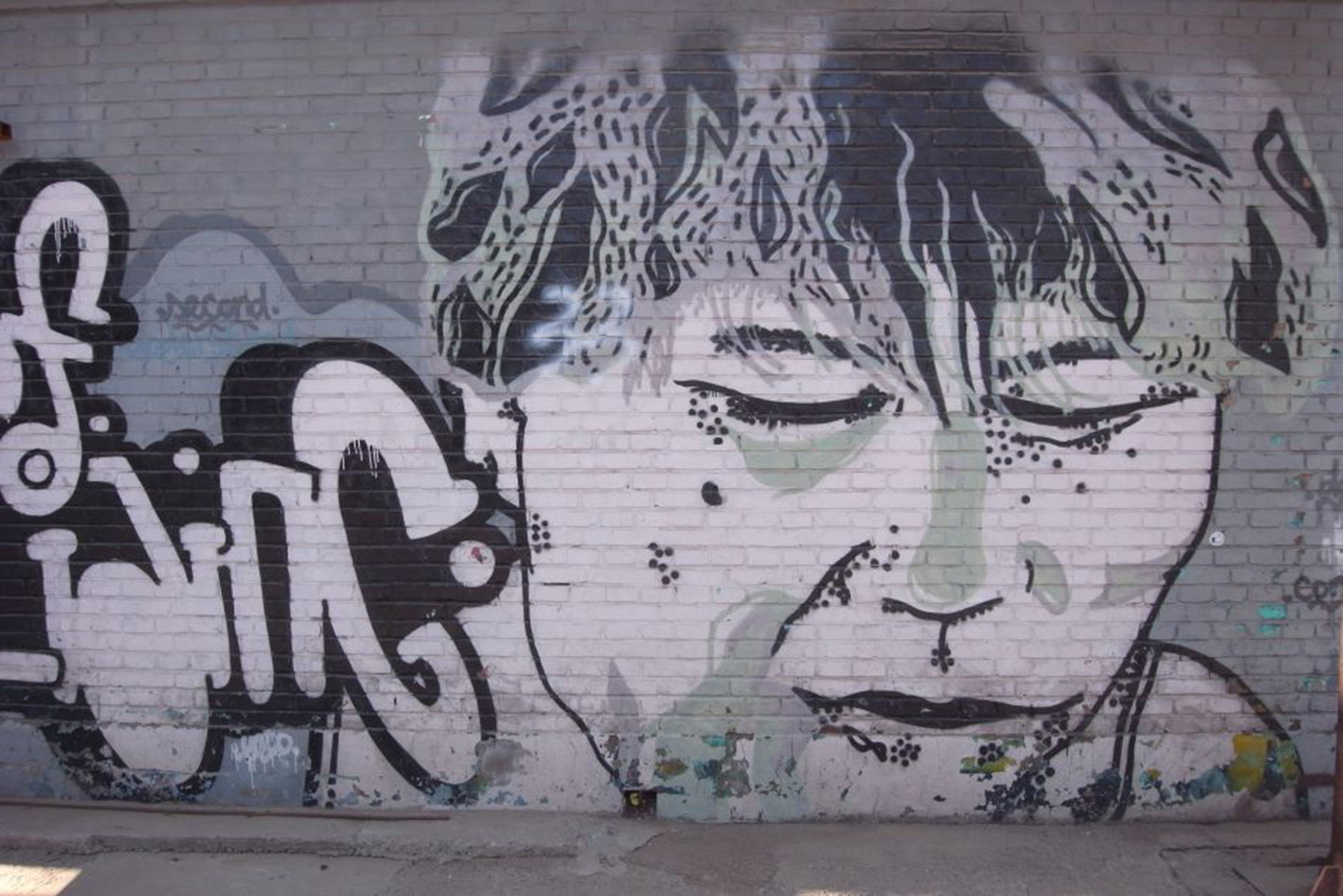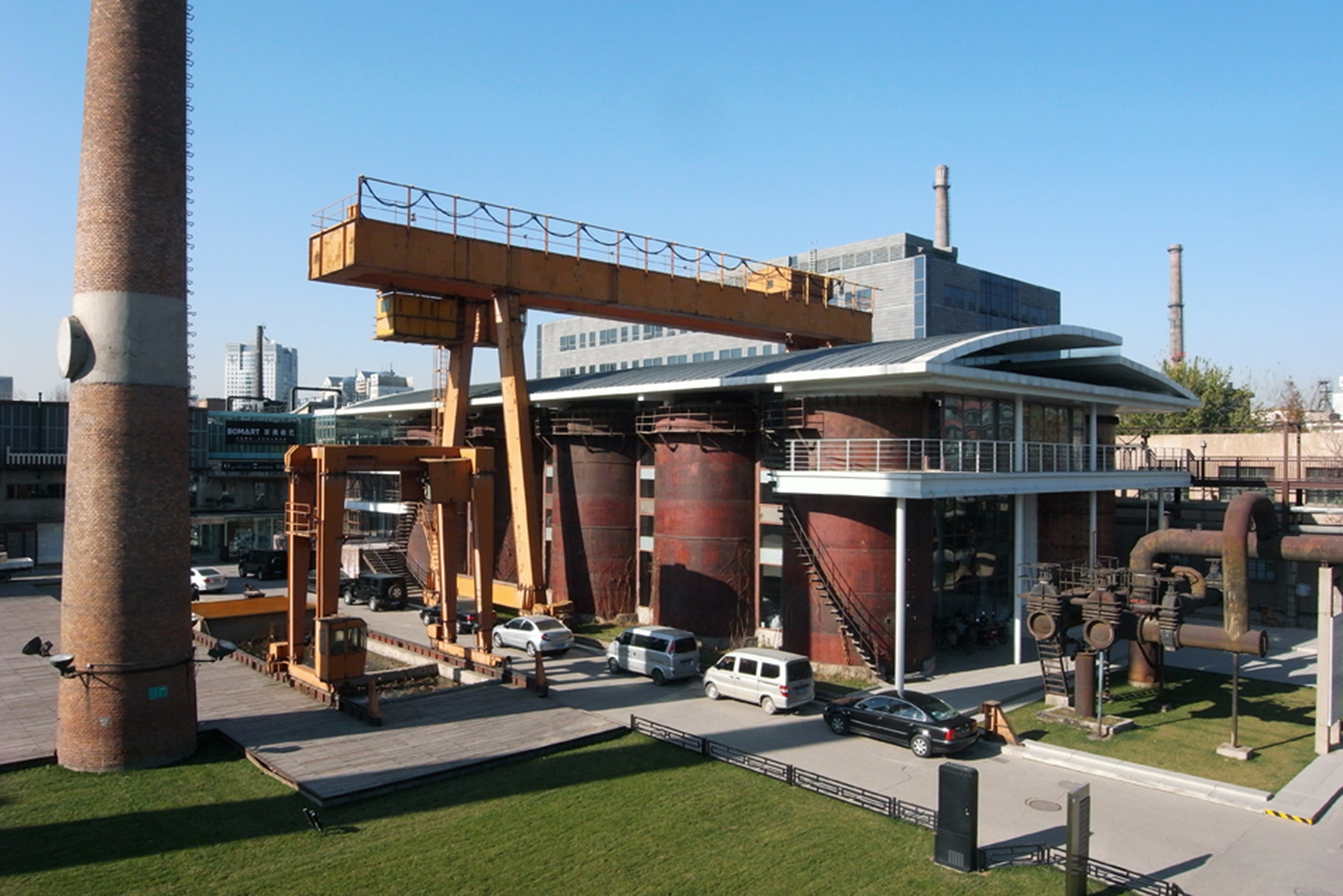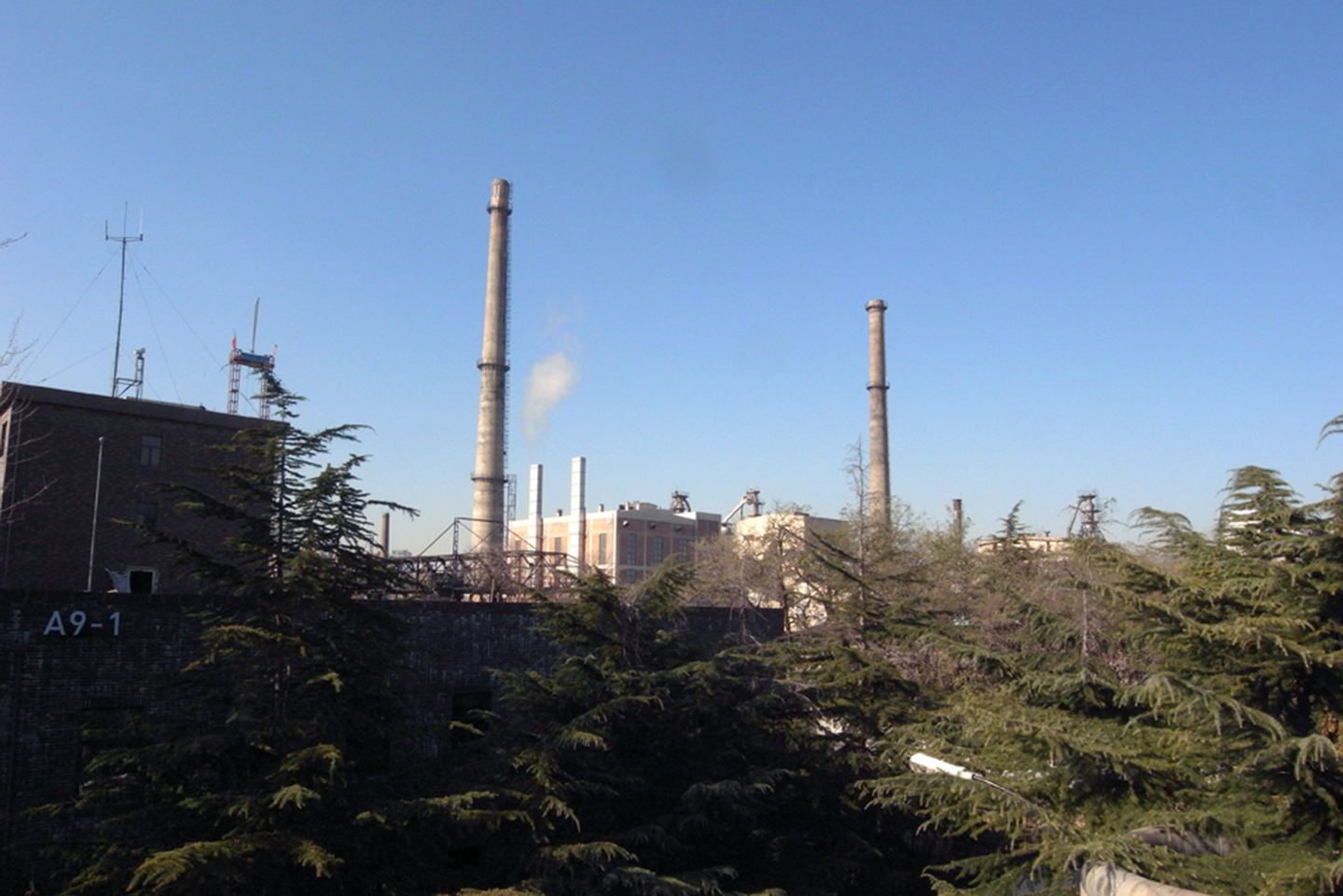798: Arts in the City
I interviewed artists, gallery owners, and those who work at this place, and I really paid attention to what happens daily. The 798 centre attracts a wide audience: foreign tourists as well as the inhabitants of Beijing, individuals or groups from different provinces. Today, this site is listed in tourist brochures along with Beijing’s traditional great sites (the Forbidden City, the Great Wall, etc).
Obviously, the district went through a large expansion; it was a peripheral zone for a long time, and was enhanced and has been given value by the presence of this art city. Other places emerged around the 798 art district where artists have set up their workshops and one can visit contemporary art galleries. New buildings have also been built, making the neighbourhood a fashionable area. Consequently though, prices are rising. From an urban point of view, the presence of the artists allowed investors to make excellent real estate deals.
Factory spirit and contemporary art
My first observation is that this phenomenon is comparable to other similar projects in large metropolises. Soho is often mentioned when talking about 798, but projects of urban expansion related to the recovery of industrial brownfields by the contemporary arts are also found. In recent years in Paris, encouraged by the state, the 104, a former warehouse for a cemetery plot in the northern district of Paris, underwent a similar process. In Buenos Aires, where I currently live, cultural projects have reinvested in old factories that were shut down after the 2001 crisis.
It could be said that 798 is a typical product of globalization, based on a process that synergizes designers, market operators of national and international art, decision makers and developers. What adds to the prestige of 798 is not only the role it plays in the cultural life of Beijing, but also its openness to new forms of creation worldwide. Should the phenomenon be limited to its “global” level? Is it enough to say that 798 is a Chinese Soho, and that it will have the same fate as this American counterpart?
798, a unique case
My second observation is that 798 and, more broadly, this kind of initiative in China, has a real specificity. First, the factory is not entirely abandoned or in disuse. When the artists arrived, they were confronting factory workers who had not left. The Seven Stars industrial company owns it, and the inhabitants are only tenants. Second, unlike projects such as 104, it was originally a spontaneous initiative. As the case years ago with the East Village, artists who came to 798 were doomed to a certain marginality. They chose the place for aesthetic (Bauhaus architecture), and economic (low rents) reasons, and, to some extent, political reasons (the possibility to create a community within the city). Rapidly, the 798 centre became a place of tension, and the crisis in 2004 during the 1st DIAF, revealed these tensions. Since then, there has been a process of normalization with the creation of the Dashanzi Art District, the management of infrastructure rehabilitation by the authorities, and the implementation and acceptance of the concept of “creative industry”.
Pioneers fall victim to their success
I would like to add that the contemporary artists there have transformed the identity of the neighbourhood by giving a new meaning to the place. My hypothesis is that 798 has since the beginning been associated with a strong project, and the ambition has been realized. In the 50s, it was an example of a factory model and a communist utopia. Today, it represents the utopia of the market: it’s a place where we consume, where we have fun and where we encounter big brands that, by sponsoring the art performances, discover new possibilities to connect with new audiences. The designers, who have unconsciously worked towards art’s commercialization, have allowed developers, gallery owners, and all categories of people here to maximize profits. At the same time, they have not only permitted the preservation of a unique industrial site, but also its rediscovery by a wider audience. Today, most of the pioneers of 798 live and work elsewhere: the rising rents and permanent presence of visitors has led to expropriation, which has been more or less voluntary. They are again marginalized in a way, even if some of them have also themselves profited in this context.
Artistic conformism but urban dynamism
What seems important to me after a decade marked by the entry of China into the world market and the extraordinary development experienced by contemporary art in this big country is to think about this new situation. Initiatives like 798 continue to emerge, but they are now part of an economic and political landscape labelled by the presence of interests that can be, at the same time, complementary and contradictory. For example, once the artists increase the attractiveness of their neighbourhoods, developers do not hesitate to demolish the houses of these artists for purely speculative reasons. Another issue is the compromise that may or may not be established between a project of “creative industry” and the specific vocation of the creators. Ultimately, isn’t there a risk of developing a kind of contemporary art where conformism would be far more visible than marginal initiatives, which would, however, be more likely to renew today’s Chinese art scene? What is certain is that we are in a period of dynamism and a boiling point where art contributes to reconfiguring urban forms and carries with it new challenges for citizens.
For more details see: Conference of Marc Abélès (13 min)
-
2014/12/19

-
Beijing

-
Marc Abélès


the other map
Explore arrow
arrow
loading map - please wait...






